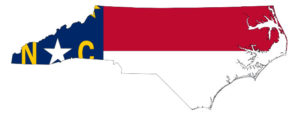 Crime in North Carolina (Uniform Crime Report)
Crime in North Carolina (Uniform Crime Report)
Law enforcement agencies report the number of offenses and associated crime data for the following Part 1 crimes: murder and non-negligent manslaughter, forcible rape, robbery, aggravated assault, burglary, larceny, motor vehicle theft and arson. Part 1 offenses, excluding negligent manslaughter and arson, are used to calculate the Crime Index and Crime Rate. All other offenses are classified as Part 2 offenses, however, only arrest data are reported for Part 2 offenses. The UCR Program collects data on the age, race and sex of persons arrested for all crimes except traffic violations. Statistics are broken down by county and the report is accessible in several sections using Adobe Acrobat.
Government Employee Telephone Directory
NC State Capital Area Telephone Directory online. A searchable alphabetical listing, plus the departmental directory are included
Job Openings
This North Carolina Employment Security Commission (ESC) site contains links to the NC Job Bank, a list of job openings in the state registered with the North Carolina ESC; NC state government jobs; America’s Job Bank, a national version of the NC Job Bank; federal government jobs; employer information; and additional job search resources.
NC Public Schools Statistical Profile
Selected statistical data from the North Carolina Department of Public Instruction on students, personnel and finances. Provides breakdowns by school system and in some appropriate cases by age (grade), race, and gender.
North Carolina Curriculum
Included are specific Department of Public Instruction goals and objectives for classroom subjects and grade levels for North Carolina. The look-up service provides a convenient way for teachers, administrators, and parents to verify the instructional objectives of the Standard Course of Study at a given grade by subject area.
North Carolina Digital Collections
The North Carolina Digital Collections contain over 90,000 historic and recent photographs, state government publications, manuscripts, and other resources on topics related to North Carolina. The Collections are free and full-text searchable, and bring together content from the State Archives of North Carolina and the State Library of North Carolina.
North Carolina Driver’s Manual
Includes the full text of the current Department of Motor Vehicles driver’s manual in English and Spanish, pictures of road signs, and the Newcomers Guide to Motoring in North Carolina.
North Carolina ECHO
Online access to the special collections of North Carolina’s libraries, archives, museums, historic sites, and other cultural institutions.
North Carolina Education Directory
Contains addresses and phone numbers of every North Carolina public, federal or charter school and public school system, all employees of the Department of Public Instruction, contact information for education organizations, associations, North Carolina commissions, and educational material suppliers.
North Carolina General Assembly
Includes links for finding representatives and senators for both the NCGA and the US Congress by county, district, and Zip code. Also includes maps of voter precincts and a history of the current congressional districts.
North Carolina Homepage
NC @ Your Service is the NC Government portal, and provides comprehensive and online services for citizens, businesses, and state employees of North Carolina.
North Carolina Periodicals Index
The North Carolina Periodicals Index is produced by the staff of the Verona Joyner Langford North Carolina Collection, J.Y. Joyner Library, East Carolina University, Greenville, North Carolina. The index provides access to articles in regional publications that pertain to a wide range of North Carolina-related topics, including the arts, business, culture, history, law, natural resources, public policy, tourism, and travel.
Coverage includes 68 current and historic publications, most of which are not indexed in standard reference tools. Content coverage is selective as articles must be at least a page in length to be included. Initial coverage began in January, 1992, but retrospective coverage of historically important titles extends to the 1930s.
All materials are available for use in the Verona Joyner Langford North Carolina Collection. Copies of articles are also available through interlibrary loan services.
Regional Accounts Data – Local Area Personal Income
Provided by the Bureau of Economic Analysis, U.S. Dept. of Commerce. Personal income and population summary estimates; detailed county annual tables of income and employment; and wage and salary summary estimates. For North Carolina-specific information, select “North Carolina” from the list of states. County-level information will be displayed once you select the state.
State Center for Health Statistics
SCHS is responsible for data collection and research, production of reports, and maintenance of a comprehensive collection of health statistics. They have published a wide variety of reports in the past and are in the process of adding them to their Web site. Currently included are several compilations of mortality statistics (including one devoted to cancer), the “North Carolina Pocket Guide” of health statistics, “Vital Facts about Life in North Carolina”, and a start toward providing pregnancy and birth statistics.
State Data Center
The North Carolina State Data Center (SDC) is a consortium of state and local agencies that provides information and data about the State and its component geographic areas. The site includes population, economic, and income data as well as county profiles and rankings. Recently a public health section was added which includes a link to the North Carolina State Center for Health Statistics. There is also a link to the North Carolina Statistical Register.
State Demographics
The State Demographics unit provides state, county, and municipal population estimates and projections by year, age, race, and sex. The annual estimates of the population of North Carolina counties and municipalities are used in the distribution of state shared revenues to local governments. County and state population projections, available by age, race (white/other) and sex, are used for long range planning.



